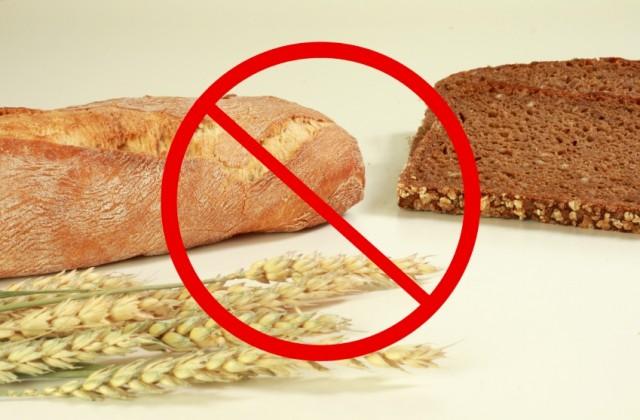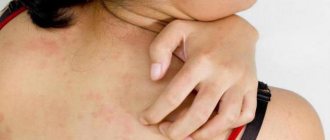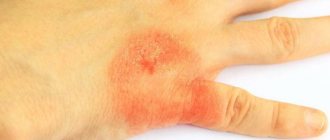Bread allergy is a fairly common disease. According to statistics, 1 in 200 people on Earth suffers from it. Usually this pathology is diagnosed in early childhood. Allergens include wheat, gluten, yeast or other additives found in baked goods.
The causes of food allergies can be:
- regularly eating the same type of bread for a long time;
- passion for baked goods with all kinds of additives, from confectionery toppings to spices;
- eating bread with a long shelf life, etc.
Hereditary predisposition plays an important role in the development of allergies. Thus, if your close relatives have an intolerance to baked goods, it is possible that it will manifest itself in you or your children.
What is a bread allergy?
A true baked goods allergy occurs when your body perceives wheat protein or other ingredients as pathogenic. In this case, the immune system immediately comes into play. It begins to intensify the production of special antibodies, as a result of which the person exhibits symptoms of an allergic reaction. In this case, you can understand that you have an allergy based on the test results. A special protein, immunoglobulin E, will be found in large quantities in the blood.
Celiac disease can also be mistaken for an allergy. This disease is characterized by damage to the villi of the gastrointestinal tract by certain foods, such as gluten or grain protein. In this case, the immune system is also involved, but immunoglobulin E will not be detected in the test results. Thus, this condition cannot be called an allergy.
Another pathology that is mistakenly confused with allergies is intolerance to individual components that make up baked goods. This condition does not affect the immune system, and therefore is also not considered a true allergy.
Thus, to understand whether you have this kind of allergy, you need to see an allergist-immunologist and undergo a series of tests.

Consequences
The consequences of a “bread” allergy can be very dire: right up to fatal outcome, death (due to anaphylactic shock). But in adults and children they are usually very different.
For children and teenagers, bread allergies are much more dangerous and can cause the following:
- short stature;
- Puberty in girls is delayed;
- anemia (very often in adults this is the only consequence of a bread allergy);
- rash on the buttocks, knees, elbows;
- delays in the menstrual cycle, miscarriages, infertility, the likelihood of giving birth to a child with serious pathologies;
- the amount of enzymes produced by the liver increases significantly (however, this indicator is normalized almost immediately after a person goes on a diet selected for him);
- osteoporosis.
In adults, the consequences may be as follows:
- bloating, flatulence;
- diarrhea and constipation (and they always alternate);
- loose stools, sometimes there may be blood clots in it;
- feeling of nausea (but vomiting is rare);
- loss of appetite.
As you can see, bread allergy is a truly dangerous disease. But with timely treatment and following a diet, dangerous consequences can be avoided.
This may be one of the types of reactions to bread. Perhaps she is the one who worries you?
How a reaction to food and food products manifests itself and how to understand that this is exactly what it is.
Learn more about how to determine what the body’s reaction is to this particular component and what you should do next.
What foods are the most common irritants. What should you exclude from your diet first?
Food allergies are no longer uncommon these days. Not only adults, but also children are exposed to it. Therefore, it is very important to observe the reaction of the child’s body to each new food product introduced.
The allergy boom to foods in our time is associated with a variety of food additives used in baking, as well as the use of various fertilizers for growing cereal plants. In the modern world, not a single plant is grown without the use of fertilizers, and fertilizers, in turn, are chemicals that act not only on parasites, but subsequently on people too.
It’s worth thinking about your health and don’t go overboard with baked goods in advance.
Anaphylactic shock is a lightning-fast allergic reaction that manifests itself from a few seconds to several minutes. If help is not provided on time, the result will be disastrous, even death.

Allergy symptoms
Symptoms of bread allergy appear at an early age. Typically, young parents encounter a similar problem when they begin to introduce complementary foods into their infant’s diet. When consuming bread and bakery products, a child may experience the following symptoms:
- foamy stools with a strong, unpleasant odor. The stool may have a grayish tint;
- bloating, increased gas formation. The stomach feels dense to the touch, and touching causes pain;
- vomit. The child may feel sick, and the attacks are repeated several times and are difficult to confuse with normal regurgitation;
- weight loss. The baby may refuse to eat as a result of feeling unwell. The weight of such a child will rapidly decrease;
- capriciousness. The child becomes agitated, he constantly cries and does not calm down well even in the arms of his parents.
In children over two years of age, the following symptoms are added to the following:
- anemia;
- retardation in weight and height;
- skin manifestations in the form of rash and diathesis.
In adult patients, an allergy to baked goods may be accompanied by the following symptoms:
- changes in blood parameters;
- damage to the muscular system;
- decreased immunity;
- constant fatigue and fatigue;
- sleep disorders;
- problems with the gastrointestinal tract;
- changes in stool;
- loss of body weight;
- increased anxiety.

In advanced cases and in the absence of treatment, patients experience gastrointestinal bleeding. Against the background of decreased immunity, diabetes and liver disease may develop. The formation of lymphomas is also possible.
Description of the disease
It is important to know that allergies can occur to both white and rye bread. Moreover, the appearance of the disease is provoked not only by gluten - a vegetable protein found in cereals, but also by other elements of baked goods, such as yeast and milk.
Each of the ingredients can become a catalyst for the development of the disease. Infants and older children are especially susceptible to this reaction. The child’s body has not yet had time to form a full-fledged immune system that can protect him from everything, so the reaction to allergens can become quite violent.
Diagnostics
To make a diagnosis and determine the causes of allergies, you need to consult an allergist-immunologist. He will collect the necessary medical history, perform an external examination and ask a number of questions. To determine the ingredient that triggered the allergic reaction, patients are prescribed a series of tests. These include:
- Lab tests. The patient must donate blood to determine the level of immunoglobulin in the blood.
- Biopsy. To exclude diseases of the intestines and gastrointestinal tract, some people undergo a biopsy. It is usually prescribed if there is a suspicion of the development of a malignant process.
- Carrying out skin tests. In this case, allergens are injected into small scratches on the patient's skin. At the end of the procedure, they look at which allergen provoked the greatest response from the body.
When making a diagnosis, it is important to exclude diseases with similar symptoms, for example, celiac disease or individual protein intolerance. The fact is that the treatment of allergies is fundamentally different from the treatment of the listed pathologies. Also, do not refuse if the doctor refers you to other specialists or advises you to undergo an ultrasound of the internal organs.
Features of nutrition for allergies
First of all, to treat allergies, the doctor recommends adjusting your diet. You can do this yourself, but it is best to seek help from a professional nutritionist. It is important for patients to exclude from the diet:
- any bread, especially rye and wheat;
- pasta products containing wheat;
- cereal porridges and cereals based on cereals;
- beer, since it contains malt;
- cookie;
- dumplings, dumplings, dumplings, etc.;
- sauces that use flour as a thickener;
- muesli and energy bars.

With caution and in small quantities you can use:
- potato;
- soy sauce;
- seitan based products (wheat protein based product).
Authorized products include:
- dishes based on natural soy;
- corn flour based products;
- rice;
- millet;
- legumes;
- fish and meat products.
Typically, the list of permitted and prohibited products is selected individually for each patient. The menu is compiled based on the individual characteristics of the body. In most cases, you have to adhere to the principles of proper nutrition for most of your life.
Drug therapy
In addition to adjusting the diet, the doctor may prescribe medication to patients. It is selected based on the symptoms of the disease. Typically this includes:
- taking antihistamines. They allow you to suppress the production of histamine in the blood and neutralize the manifestation of allergies in the early stages. Antihistamines are sold in the form of tablets, drops, suspensions, etc. The drug is selected based on the patient’s age. The most effective are Claritin, Cetrin, Erius, Dezal;
- use of corticosteroids. Drugs in this group are prescribed to patients if taking antihistamines has not given the desired result. Steroid-based medications must be taken under the strict supervision of a doctor and in no case violate the treatment regimen. These include the following drugs: Prednisolone and Dexamethosone. These drugs have many side effects, so they are prescribed to children with caution. They also cannot be used for self-medication;
- taking vitamin complexes. Vitamins and mineral supplements strengthen the immune system and promote rapid regeneration of the body;
- use of local drugs. If the allergy is accompanied by a rash, itching and other skin manifestations, patients are prescribed various ointments and creams. For example, Gistan ointment has a good effect. Preference is given to non-steroidal agents, as they can be used to treat both adults and children.

For food allergies, patients are prescribed medications that help remove toxins from the gastrointestinal tract. This includes medications such as Smecta or activated carbon.
Treatment of allergies with traditional methods
In addition to the main treatment, traditional methods can be used to relieve unpleasant symptoms. However, they must be agreed with the attending physician. Do not forget that some natural remedies themselves are strong allergens. So, to treat allergies to baked goods you can use:
- mumiyo. One gram of the substance must be dissolved in a liter of warm boiled water. Take the finished product in the morning for three weeks. Take ½ cup of the solution with one glass of warm milk;
- rosehip and dandelion. Dried or fresh raw materials are poured with a glass of boiling water for 24 hours. After this, the infusion is filtered and another glass of boiled water is added. The product is taken three times a day, one glass. The course of treatment is at least 10 days;
- nettle. Dry nettle leaves in the amount of one tablespoon should be poured with a glass of boiling water. Next, the product is infused for about 30-40 minutes, filtered and cooled. You should drink the product 3 times a day, one glass.
If you have been diagnosed with a bread allergy, you must completely avoid any baked goods. Treatment of the disease should be agreed with a doctor, especially when it comes to young children. Do not forget that allergies are a fairly serious disease, fraught with dangerous complications. If during therapy you feel a deterioration in your condition, you should immediately seek qualified medical help.
Causes
Bread is the main product in the daily diet. It is eaten for breakfast with sandwiches, for lunch, and for dinner. It can very easily satisfy your hunger, it contains a large amount of calories and adds nutritional value to food. But there are times when, after eating a piece of bread, some people begin to feel unwell. This is how an allergic reaction to food is most often expressed. According to doctors, an allergy to bread appears due to the grains and various additives it contains.
Bread is baked from flour, and it is made from cereals: wheat, rye, corn and others. If you are hypersensitive to any grains, consuming products made from them may cause an allergic reaction. But more often, the cause of bread allergies is various flavoring additives that some bread manufacturers love to use to make its taste more interesting and piquant. Spices, spices (dill, parsley, sesame, cumin, pepper, onion, garlic, etc.), herbs and even chaga can be used as such additives. But these additives to enhance taste and aroma do not always bring health benefits. Many of them are strong allergens.
The main causes of allergies are the following:
- Eating the same type of bread for a long time.
- Eating bread and pastries with a long shelf life.
- Eating large amounts of bread and pastries with different flavors.
- Hereditary predisposition to bread allergy.
Most often, white bread causes an allergic reaction. The reason for the allergy lies in the fact that wheat flour, from which white bread is baked, contains a lot of gluten. It is thanks to this substance that baked goods are so tasty, fluffy and aromatic.
Allergy to gluten is quite rare, and only about 1% of all people suffer from individual intolerance to this substance. Gluten allergy symptoms are somewhat specific, which makes timely recognition of an allergic reaction difficult.










